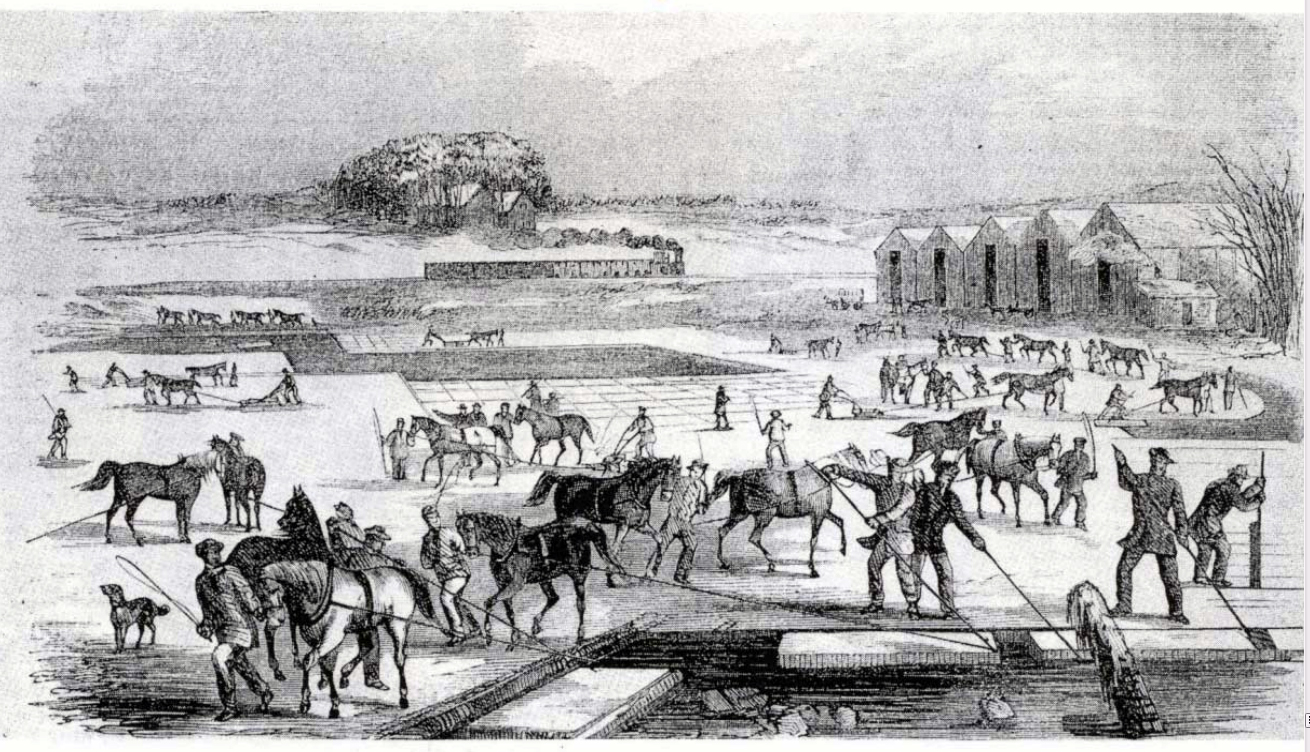A tall frosted glass of something delicious, clinking with ice – is there anything to beat this on a hot summer’s day in Chennai? Today, it just means a walk to the ‘fridge, but what about the days before refrigeration? Would you believe that there was ice in Chennai much before refrigeration was invented? All thanks to a 19th century businessman from far away Boston. His name was Frederic Tudor. It’s because of him that Chennai has a handsome round building on the Marina beach front – the Ice House, now called Vivekananda House. Let me connect all the dots for you.

Tudor was born in a prosperous Boston family in 1783. His story can be a classic business school case-study; . One day, young Tudor had a brain-wave, as he gazed over a frozen New England lake. If he harvested the ice from the lake and sold it in tropical regions, wouldn’t people just love it ? He tried to find backers for his dream project, but every one thought it was an outrageous idea. . Undeterred, he bought a ship in 1806, loaded it with ice chopped from a frozen lake and sent it to Martinique, 3200 Km away in the West Indies. The ice arrived intact, but the people of Martinique did not know what to do with it. Afterall, they had never had a need for this strange substance before!
For about 10 years, Tudor went on a big promotion campaign to make people “need “ice. He went from bar to bar, promoting iced drinks and teaching people to make ice-cream. Customers were skeptical at first, but once they tried it, they certainly “needed” it. Soon Tudor was delivering ice all over the US. Tudor’s experiments produced the best way to stop ice from melting en route: the ice-blocks were covered with pinewood saw dust. He created a transport network with coaches, boats and wharfs for speedier transport of ice. He also introduced faster and safer methods of cutting and handling the ice.

Public domain - Image from Wikipedia
Still, the Ice Business was far from “cool”. His innovations needed much funding, and Tudor tried to fill the gap by running side-businesses. He tried bringing in fruits from Havana and coffee from South America. He knew nothing of these trades, and lost heavily. Sometimes his agents cheated him, and the Anglo-US war of 1812 depressed his business. By now Tudor was dodging creditors and was even put in Debtors Prison twice. Yet, Tudor never lost his motivation: he knew that the core ice business was robust: the ice and saw dust were free, the transport was cheap, because ships returning from Boston needed loads. So, after every reversal, he kept bouncing back with better ideas on cutting, transporting and storing ice.
In 1833, he came up with his craziest idea yet. He shipped ice to Calcutta, India –12,500Kms away. And it worked! Like many modern MNCs, he had successfully tapped the Infinite Indian market. Soon, he was supplying ice to Bombay, Madras and Calcutta. Tudor’s legacy to Chennai, the Madras Ice-House was built in 1842. He now served markets in North & South America, India, and Hong Kong. No more debts, he WAS rich!

In the 1850s a new threat emerged. Dr. John Gorrie, had been using Tudor’s natural ice to cool his malaria patients. His job was so dependent on natural ice that he started experimenting on artificial ice-makers. In 1851 he patented his own ice-maker. Unfortunately, Dr. Gorrie was a great innovator with a terrible business sense. His efforts to commercialize his invention were disastrous. Tudor, the hardened businessman, mounted a bitter campaign maligning Dr. Gorrie’s machine, even suggesting that artificial ice had germs in it! Gorrie lost the Ice-War. He died unrecognized, humiliated and went bankrupt.

But technology could not be stopped. By the 1860s, better Ice-Makers came up, and the natural ice business eventually evaporated. Tudor however, died rich, and had a title, “The Ice King”.
Interested in learning more about this topic? Here’s a short video about the Madras Ice House that has now morphed into a museum.
Archives
- January 2022
- December 2021
- November 2021
- August 2021
- March 2021
- February 2021
- January 2021
- December 2020
- November 2020
- October 2020
- September 2020
- August 2020
- April 2020
- March 2020
- February 2020
- January 2020
- November 2019
- October 2019
- September 2019
- August 2019
- July 2019
- June 2019
- August 2017
- February 2017
- January 2017
- October 2013
Featured Posts
- Tales that pots tell: Keeladi excavations AUGUST 18, 2021
- The Last Grand Nawab: Wallajah FEBRUARY 10, 2021
- How Tej Singh became Raja Desingu of Gingee FEBRUARY 5, 2021
- How Shahjahan seized the Mughal throne JANUARY 28, 2021
- Alai Darwaza – Qutub Minar Complex, Delhi NOVEMBER 21, 2020
- Marking History through British buildings NOVEMBER 17, 2020
- The last great queen of Travancore NOVEMBER 7, 2020
- Brahmi and the evolution of scripts OCTOBER 15, 2020
- The Cambodian King of Kanchipuram OCTOBER 14, 2020
- James Prinsep – the man who read the writing on the wall OCTOBER 10, 2020
- Mariamman – the Village Goddess who travelled SEPTEMBER 30, 2020
- Misnamed Monuments of Mamallapuram SEPTEMBER 28, 2020








